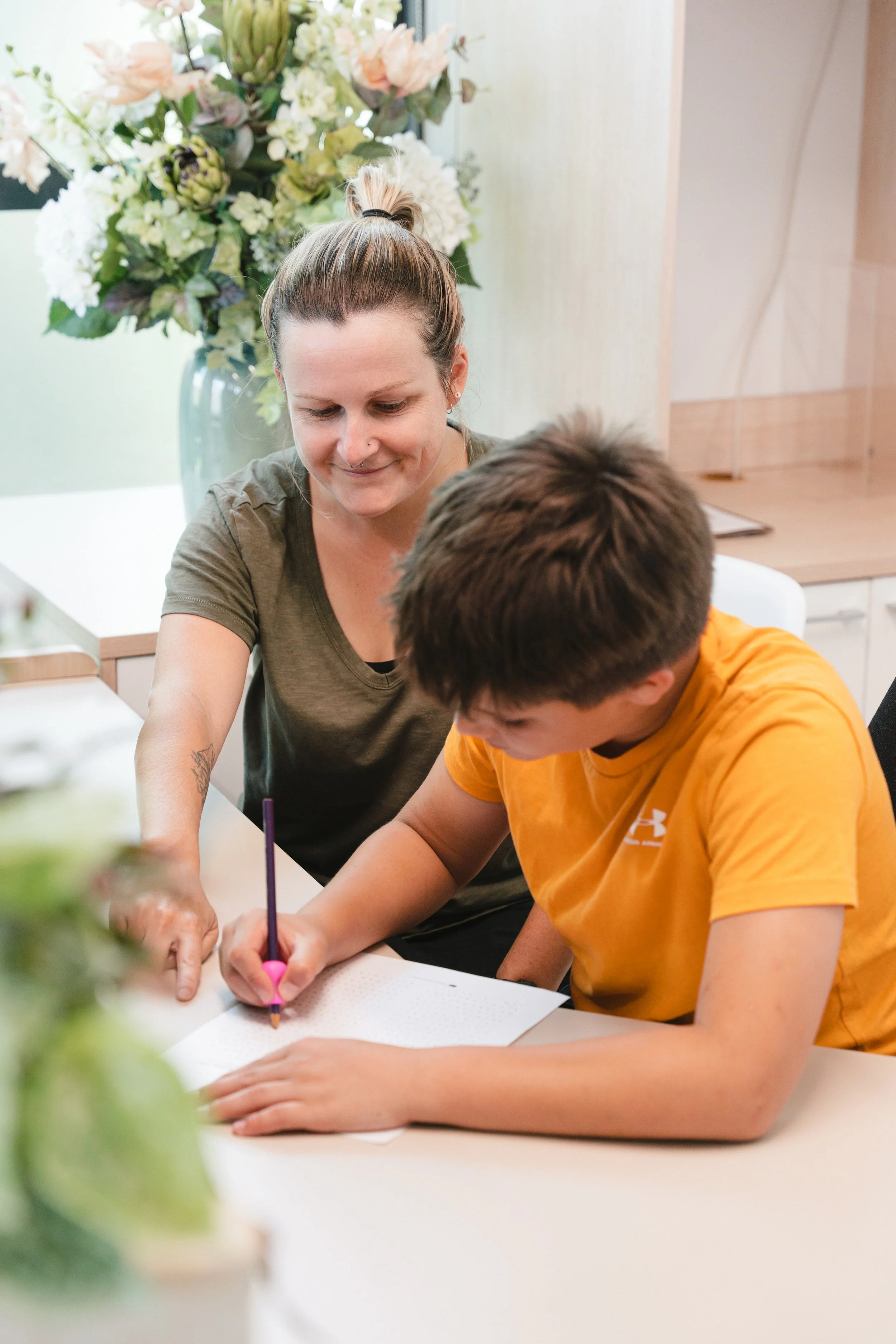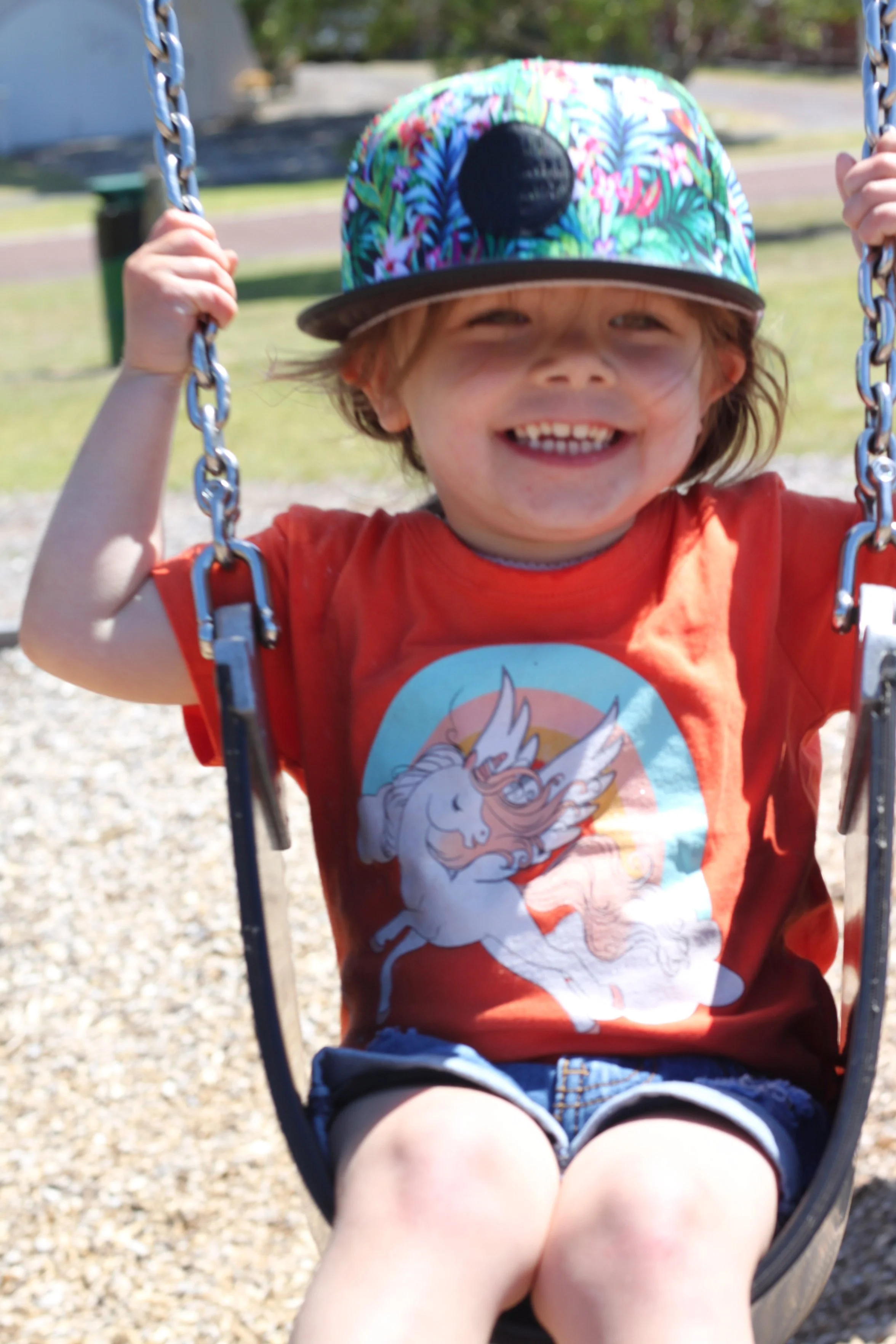Supporting Children with Alexithymia: Understanding Emotions Through the Body
Supporting Children with Alexithymia: Understanding Emotions Through the Body
Does your child struggle to explain their feelings? The answer may lie in the body—not just in words. Discover a surprising approach to emotional support.
The Power of a Deep Breath: Your Body’s Secret Superhero
The Power of a Deep Breath: Your Body’s Secret Superhero
Breathing is something we do over 20,000 times a day—but when it goes off track, it can affect the whole body. This blog explores how children’s breathing is linked to stress, health, and wellbeing, and how simple physiotherapy strategies like diaphragmatic breathing can help restore calm and balance.
Understanding Anterior Knee Pain in Teenagers: Growth, Puberty and How Physiotherapy Can Help
Understanding Anterior Knee Pain in Teenagers: Growth, Puberty & Physiotherapy
Knee pain is one of the most common reasons teenagers step back from sport or activity. It might show up as a dull ache at the front of the knee, or a sharp pain below the kneecap.
Parents are often told “don’t worry, they’ll grow out of it” — but research shows this wait-and-see approach can leave young people with ongoing pain, loss of confidence, and reduced participation in the activities they love.
So why does it happen? During growth and puberty, bones grow quickly while muscles and tendons struggle to keep up. Hormonal changes, busy sporting loads, and developing coordination all put extra pressure on the knees. The result? Conditions like patellofemoral pain, Osgood-Schlatter disease, and Sinding-Larsen-Johansson syndrome — common but very treatable with the right support.
Physiotherapy helps teenagers stay active by:
Pinpointing the cause of pain with clear assessment.
Building strength in hips, thighs, and core to protect growing joints.
Improving movement patterns like landing, squatting, and running.
Balancing sport and recovery, so they don’t have to stop everything.
Reassuring and empowering teens to understand their pain and keep moving confidently.
The takeaway? Anterior knee pain in teens is common, but not something to ignore. With early, active management, your child can recover, rebuild confidence, and keep enjoying the activities they love.
Why Paediatric Physio is Awesome!
Why Paediatric Physio is Awesome!
At Nurture Paediatrics, we know kids aren’t just small adults—their growing bodies and minds need care designed just for them. Our paediatric physiotherapy is about more than exercises; it’s about empowering tamariki and whānau with understanding, support, and fun, evidence-based therapy. From injuries and pain to long-term conditions, we help children feel confident in their bodies, return to the activities they love, and build lifelong strength and resilience.
Kids Driving You Up the Walls? Let Them Draw on Them!
“Driving You Up the Walls? Let Them Draw on Them!”
Why vertical drawing might be the best post-holiday activity for your child’s development
Discover how vertical drawing can build strength, coordination, fine motor skills, and creativity—while keeping little ones off screens and happily engaged after the holidays."
Tiptoes, Flat Feet and Funny Steps: Understanding Toddler Foot Development
Tiptoes, Flat Feet and Funny Steps: Understanding Toddler Foot Development
Once children get past those wobbly first steps, they often develop some interesting walking patterns to get themselves around. They may look funny to you or me — but how can you tell what’s normal and when to worry?
Little Feet, Big Questions: What’s Normal in Baby Foot Development?
Little Feet, Big Questions: What’s Normal in Baby Foot Development?
If having a new baby wasn’t enough of a minefield, the world of baby foot conditions can bring up even more questions (and worry) for parents. Do their feet turn in? Or out? Do they have funny-looking toes? Or are you just so sleep-deprived that everything’s starting to look a little hazy?
The truth is, newborn feet are very different from those of older children or adults, and it’s perfectly normal to notice a few quirks. So, what’s considered normal—and when should you seek advice?
18,333 Kilometres Apart, Still Growing Alike: The Magic of Development Across Hemispheres
18,333 Kilometres Apart, Still Growing Alike
A physiotherapist’s reflection on the universality of childhood movement
When I moved from Wales to New Zealand, I expected a lot to be different—accents, weather, landscapes. But one thing stayed remarkably the same: how children move.
From rolling to crawling, sitting to walking, the movement patterns of children on opposite sides of the world are beautifully alike. Despite cultural differences and climate contrasts, the way a child’s brain and body grow and learn is universal.
This realisation deepened my fascination with child development. Movement, it turns out, is more than physical—it's how the brain builds itself. From a newborn's reflexive grip to a toddler's confident steps, every wiggle, wobble, and stretch is laying down vital brain pathways.
No matter where they are born, children grow with the same astonishing magic. And for those of us lucky enough to witness it every day, it’s a reminder of just how incredible development really is.
Helping Your Child Walk Again After a Lower Leg Cast: A Parent’s Guide
When your child gets the “all clear” after having a cast removed from their leg, it’s a moment of relief and celebration. But for many families, what follows can be unexpectedly challenging. You might have been told your child is now fine to walk… but they refuse to stand, hobble on tiptoes, or keep asking to be carried. If this sounds familiar, you are not alone.
At Nurture Paediatrics, we regularly support tamariki and their families through this very phase – helping children retake confident steps (literally!) after a fracture. This blog will guide you through what’s going on, why your child might be anxious or reluctant, and what you can do to help – practically, gently, and playfully.
Helping Children Understand Pain: A Compassionate, Child-Centred Approach at Nurture
Helping Kids Understand Pain: Why Metaphors, Education & Family Support Matter
When a child is in pain, their response is often misunderstood as overreaction. But what looks like “catastrophising” is usually a normal, developmentally appropriate reaction to fear and uncertainty. At Nurture Paediatrics, we use child-friendly education tools—including metaphors like the pain control console—to help tamariki (and their whānau) understand the complexity of pain and take confident steps toward recovery.
Learn how we’re transforming pain care for children through connection, clarity, and compassionate communication.
“My Child’s Heels Hurt!” A Parent’s Guide to Calcaneal Apophysitis (Sever’s Disease)
Is your child complaining of heel pain after sports or activity? They may be experiencing calcaneal apophysitis (Sever’s disease)—a common condition in growing kids. Despite the name, it’s not a disease but an irritation of the heel’s growth plate due to overload, growth spurts, or unsupportive footwear.
Is this blog Mandy explores why traditional calf stretching may actually prolong symptoms—and highlights evidence-based treatments like load management, supportive footwear, sport-specific strength training, and biomechanical assessments. With the right approach, kids can stay active and recover fully.
Rethinking School Cross Country: A Parent’s Guide to Positive Preparation
Helping Your Child Prepare for School Cross Country
Why preparation matters – and how to make it a positive experience
School cross country is a long-standing tradition in Aotearoa schools, but for many children, it can be a source of stress rather than excitement. In a typical classroom, there’s a huge range of physical abilities—from sporty kids training daily to others who are largely inactive. That gap is only getting wider, and unfortunately, it can make school cross country feel daunting for those not already confident in their physical abilities.
At Nurture Paediatrics, we love the idea of school cross country – but we believe it needs a better lead-in to make it inclusive and enjoyable for every child.
In this blog, we walk you through simple, practical strategies to help your child prepare. From goal setting to course familiarisation, family exercise routines to informal training races – we cover it all. You'll also learn why timing matters, especially as cross country often falls just before winter sports begin. Without adequate preparation, kids face a higher risk of injury or pain, which can discourage them from future participation.
With the right support and preparation, cross country can be a wonderful opportunity for children to build confidence, endurance, and resilience – regardless of where they finish in the race.
Your child doesn’t need to be a top runner – they just need to feel prepared, supported, and proud of giving it a good go.
Read the full guide to help your child thrive at this year’s school cross country and plant the seed for a lifelong love of movement.
Understanding Autism Through the Eyes of an Occupational Therapist
As an Occupational Therapist (OT), my role in helping individuals with autism is to support them in achieving greater independence and participation in everyday life by addressing their specific needs and challenges. In this blog post, I’ll share some insights into how occupational therapy can support individuals with autism and why it’s such an essential part of the treatment and intervention process.
The Power of Sensory Equipment: Finding Calm and Clarity
In today’s fast-paced world, managing stress and anxiety can be challenging, especially for individuals with sensory processing differences, autism, ADHD, or anxiety. Sensory equipment offers a practical solution, providing comfort, calm, and focus through innovative tools like weighted blankets, compression clothing, and fidget toys.
Weighted Blankets: A Natural Way to Reduce Anxiety
Weighted blankets use deep pressure stimulation to promote relaxation, helping to increase serotonin levels and reduce stress. Whether for improved sleep, better focus in school, or relief from overwhelm, weighted blankets or smaller lap pads can make a significant difference.
Compression Clothing: Enhancing Comfort and Focus
Compression items like body socks, tight-fitting shirts, and sensory bed sheets create gentle, even pressure, helping with body awareness, emotional regulation, and improved sleep quality.
Other Sensory Tools for Everyday Calm
From fidget toys and sensory swings to chewable pendants and wobble cushions, a variety of sensory tools can support self-regulation and focus for both children and adults.
If you're unsure which sensory tools are right for you or your child, consulting a pediatric occupational therapist (OT) can help tailor solutions to individual needs. Sensory equipment is more than just a trend—it’s a proven way to enhance well-being, reduce anxiety, and improve daily life.
The Power of Playgrounds: Nurturing Tamariki Development
Discover the Hidden Benefits of Playgrounds for Tamariki
Playgrounds are more than just fun—they’re essential for child development! From enhancing balance and coordination on the slide to building strength and flexibility on the monkey bars, playgrounds nurture physical and sensory growth. Learn how activities like climbing and swinging boost the vestibular and proprioceptive systems, promote social skills, and support healthy habits. Explore the developmental magic of playgrounds and empower your tamariki to thrive through play! 🌟
Keywords: benefits of playgrounds, child development, tamariki, balance, coordination, strength, sensory integration, vestibular system, proprioceptive system, playground activities, paediatric physiotherapy
5 things NOT to say to your picky eater:
Struggling with a picky eater? Discover 5 common phrases to avoid and what to say instead to encourage your child to explore new foods without pressure or stress. Create positive mealtime experiences with practical tips that build trust and confidence.
picky eaters, kids’ nutrition, healthy eating habits, mealtime tips, overcoming food aversions, child-friendly meals, parenting advice.
The Vital Role of Sleep in Children's Health and Development: A Guide from Nurture Paediatrics
Sleep is essential for children’s physical health, cognitive growth, and emotional well-being. At Nurture Paediatrics, we recognize that sufficient sleep is crucial for your child's development and overall health.
How Much Sleep Do Children Need?
Preschoolers (3 to 5 years): 10 to 13 hours (including naps)
School-aged children (6 to 12 years): 9 to 12 hours
Teenagers (13 to 18 years): 8 to 10 hours
The Impact of Poor Sleep
Inadequate sleep can significantly affect a child’s physical health, learning abilities, emotional regulation, and behavior. Sleep is the time when the body heals, grows, and processes information. Without enough rest, children may experience slower growth, difficulties with concentration and learning, increased moodiness, and behavioral problems.
Creating Healthy Sleep Habits
Establishing a consistent bedtime routine, creating a sleep-friendly environment, encouraging physical activity, and monitoring sleep quality are key to ensuring your child gets the rest they need.
At Nurture Paediatrics, we integrate sleep health into our comprehensive care plans to support each child’s unique needs, promoting their physical, cognitive, and emotional development. If you have concerns about your child’s sleep, we’re here to help. Let’s work together to ensure your child’s sleep supports their journey to a healthy and thriving future.
Steps and Strides: Understanding Children's Daily Activity at School
In the busy world of a school day, children take thousands of steps, but how does this activity measure up to recommended levels? Global guidelines emphasise the importance of physical activity, and tracking daily steps has become a simple way to gauge movement. Research shows that while children are generally more active than adolescents, many struggle to meet or exceed these guidelines, leading to potential risks like injury or musculoskeletal pain. At Nurture Paediatric Physio, we focus on helping children find a balance, promoting optimal health through proper loading, injury prevention, and recovery.
Hydrotherapy for Orthopaedic and Musculoskeletal Rehabilitation in Children and Adolescents
Hydrotherapy, also known as aquatic therapy or water rehabilitation, has gained recognition as a powerful rehabilitation tool for individuals recovering from orthopaedic or musculoskeletal injuries. This form of therapy harnesses the unique properties of water to provide a safe and effective environment for rehabilitation, especially for children and adolescents. In this blog, we will explore the numerous benefits and principles of hydrotherapy and how it can aid in the recovery of young individuals with injury recovery.
“My child with ADHD won’t listen”: Why telling them to “stand still” won’t help
If you’re a parent of a child with ADHD, you may often find yourself telling them to "stand still" or "look at me" to ensure they’re listening. However, for children with ADHD, such commands can be counterproductive. ADHD affects how they process sensory input, and many children use movement as a way to focus. Forcing them to be still can actually hinder their concentration and increase anxiety. Instead, embrace their need to move. Try engaging in light activities like walking or letting them use a fidget toy while talking. Reducing sensory distractions, using visual aids, and creating comfortable spaces for conversation can also help. By adapting to your child’s natural tendencies, you can foster more effective communication, making them feel understood and valued, which leads to stronger relationships.





















